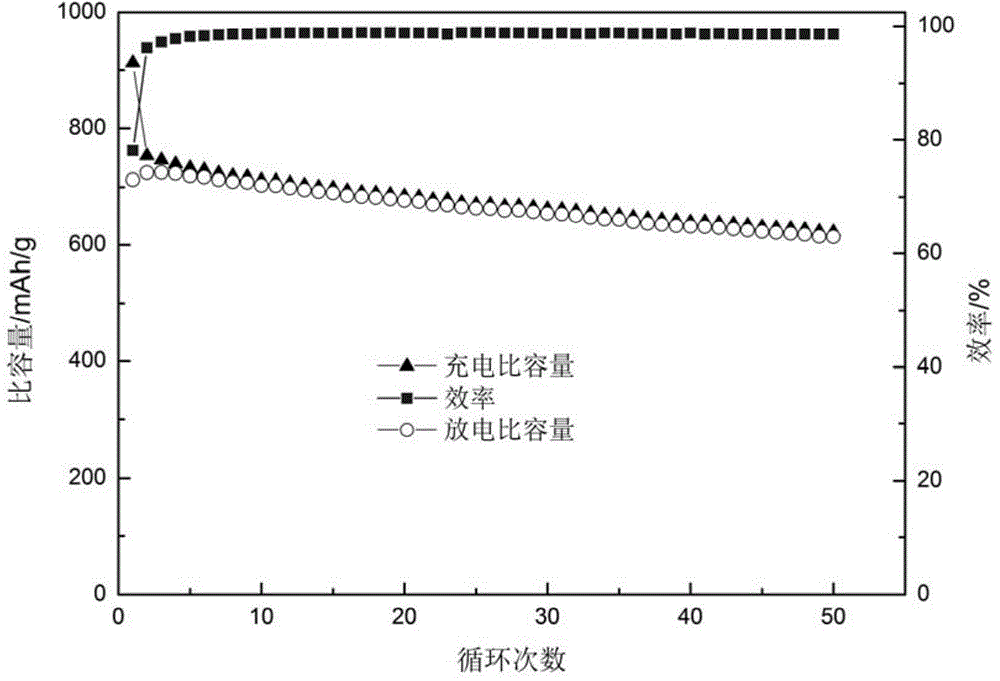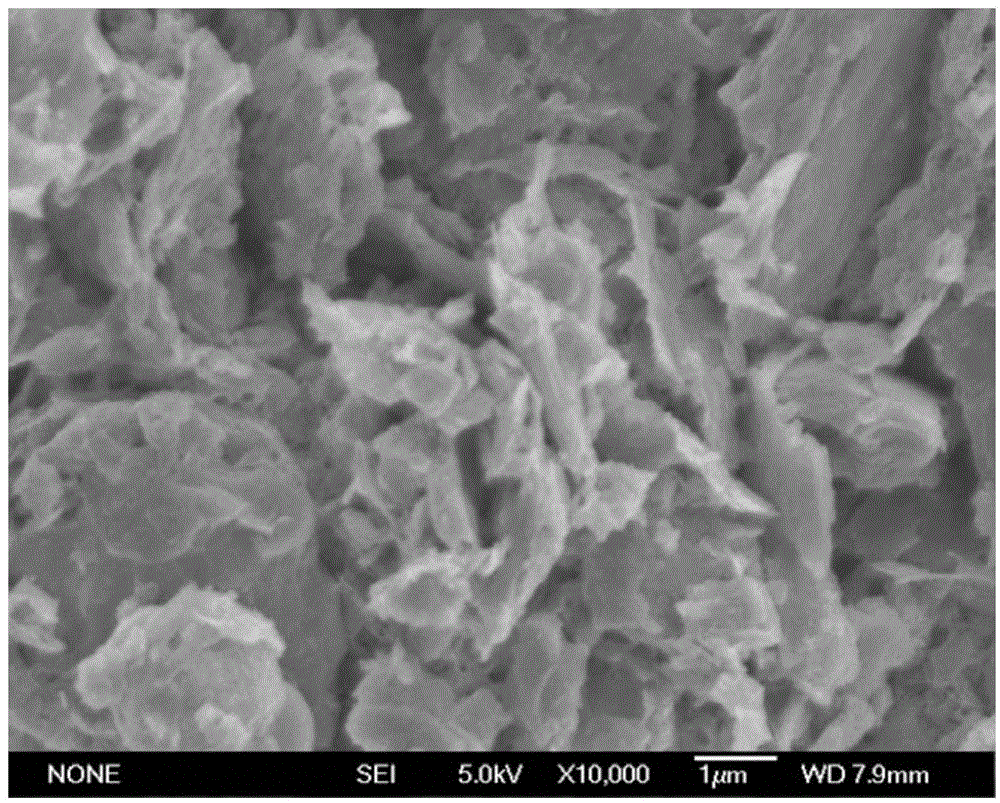Preparation method of silicon-carbon negative electrode material for lithium ion battery
A lithium-ion battery and negative electrode material technology, applied in battery electrodes, circuits, electrical components, etc., can solve the problems of poor cycle stability of silicon carbon negative electrode materials, and achieve the effect of improving cycle performance and alleviating volume expansion.
- Summary
- Abstract
- Description
- Claims
- Application Information
AI Technical Summary
Problems solved by technology
Method used
Image
Examples
Embodiment 1
[0021] (1) High-energy ball milling step: performing mechanical high-energy ball milling on the mixture of Si, SiO and natural graphite to obtain a ball milling mixture. The ball-to-material ratio during ball milling was 10:1, the rotational speed was 300 rpm, and the ball milling time was 10 hours.
[0022] (2) Micro-oxidation step: place the ball-milled mixture in a porcelain ark with a charging thickness of 0.5 cm, put it into a tube furnace at 200 ° C, feed air at a flow rate of 0.1 L / min and keep warm for 0.5 h, take it out and place it in a dry box to cool naturally.
[0023] (3) Organic carbon coating step: mix asphalt and tetrahydrofuran in a weight ratio of 0.5:1 to obtain an organic carbon source solution, then add the ball mill mixture treated in the micro-oxidation step and mix for 2 hours, wherein the ball mill mixture The weight ratio with the organic carbon source solution is 1:2. The mixed solution was heated and evaporated to dryness at 100° C. to obtain a m...
Embodiment 2
[0026] (1) High-energy ball milling step: performing mechanical high-energy ball milling on the mixture of Si, natural graphite and artificial graphite to obtain a ball milling mixture. The ball-to-material ratio during ball milling was 5:1, the rotational speed was 500 rpm, and the ball milling time was 30 hours.
[0027] (2) Organic carbon coating step: mix the organic carbon source and the solvent at a weight ratio of 0.1:1 to prepare an organic carbon source solution, then add the ball mill mixture and mix for 0.5 h, wherein the organic carbon source is glucose and sucrose The mixture is formed, the solvent is a mixed solution composed of tetrahydrofuran and cyclohexane, and the weight ratio of the ball mill mixture to the organic carbon source solution is 1:3. The mixed solution was heated and evaporated to dryness at 200°C to obtain the precursor material;
[0028] (3) High-temperature carbonization step: the precursor material is placed in a tube furnace, and roasted u...
Embodiment 3
[0031] (1) High-energy ball milling step: performing mechanical high-energy ball milling on the mixture of Si, SiO and graphitized mesophase carbon pellets to obtain a ball milling mixture. The ball-to-material ratio during ball milling was 20:1, the rotational speed was 400 rpm, and the ball milling time was 20 hours.
[0032] (2) micro-oxidation step: the ball mill mixture is placed in a porcelain ark with a charging thickness of 1 cm, put into a tube furnace at 100 ° C, and O 3 And keep it warm for 2 hours, take it out and put it in a dry box to cool naturally.
[0033] (3) Organic carbon coating step: mix the organic carbon source and the solvent at a weight ratio of 0.05:1 to obtain an organic carbon source solution, then add ball mill mixture and mix for 4 hours, wherein the organic carbon source is pitch and phenolic resin And a mixture composed of epoxy resin, the solvent is a mixed solution composed of water, ethanol and isopropanol, and the weight ratio of the ball ...
PUM
 Login to View More
Login to View More Abstract
Description
Claims
Application Information
 Login to View More
Login to View More - R&D
- Intellectual Property
- Life Sciences
- Materials
- Tech Scout
- Unparalleled Data Quality
- Higher Quality Content
- 60% Fewer Hallucinations
Browse by: Latest US Patents, China's latest patents, Technical Efficacy Thesaurus, Application Domain, Technology Topic, Popular Technical Reports.
© 2025 PatSnap. All rights reserved.Legal|Privacy policy|Modern Slavery Act Transparency Statement|Sitemap|About US| Contact US: help@patsnap.com


